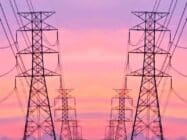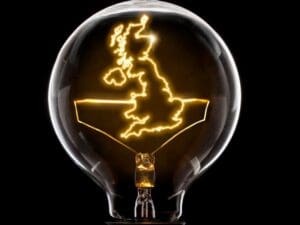
This week’s Smart Energy Finances looks at strategic moves made by the European Energy Exchange (EEX), which has acquired the Nasdaq European power trading and clearing business; also on the radar is an announcement from Duke Energy and three other utilities of initiated energy trading on a Floridian trade platform.
Germany-based European Energy Exchange (EEX) has acquired Nasdaq’s European power trading and clearing business, subject to receipt of customary regulatory approvals.
The transaction to EEX will involve the transfer of existing open positions in Nasdaq Nordic, French and German power futures as well as European carbon emission allowance futures (EUAs) to EEX’s clearing house European Commodity Clearing (ECC).
No financial details of the deal have been disclosed.
Nasdaq Clearing AB, along with the clearing infrastructure to support it, is not part of the sale.
As part of the agreement with Nasdaq, EEX will update the current Nordic power market structure, replacing Electricity Price Area Differential (EPAD) contracts with zonal futures contracts.
Until the receipt of regulatory approvals, Nasdaq will continue to operate its European power trading and clearing business as usual.
Stated EEX on their website: “EEX is confident that overall liquidity in the Nordics can be improved by offering zonal futures, as the market will be accessible for a wide pool of pan-European power traders who can execute geographic trading strategies and capture cross-margining efficiencies. Nordic participants can also hedge using the existing Nordic System Price products offered by EEX.”
Have you read:
Time to restore stability to Europe’s electricity market
GB flexibility marketplace Piclo to grow international presence
Svenska’s EPADs
Responding to the announcement was Swedish TSO Svenska kraftnät, which has since February this year, they state, conducted auctioning of EPAD contracts corresponding to 10% of the Swedish grid’s capacity to transmit electricity between electricity price areas SE2, SE3 and SE4.
State the TSO: “The auctions are part of Svenska kraftnät’s pilot project, with the aim of supporting liquidity in the financial electricity market and [facilitating] the opportunities for market participants to hedge their production or consumption.”
The pilot, which runs in 2023 with a possible extension until 2024, can only auction EPAD contracts if they are traded on the financial electricity market.
One month prior – a Baltic acquisition
One month prior to the Nasdaq announcement, EEX Group acquired Gas exchange GET Baltic, which has become part of the Group.
The deal was signed between EEX and Lithuania’s gas TSO Amber Grid, under which EEX will take 66% of the shares in the regional gas exchange GET Baltic.
As a result, the gas exchange operating in the three Baltic countries and Finland will become part of EEX Group. Amber Grid will hold the remaining 34% of the shares and will continue to support the further development of the gas business in the dynamic Baltic Sea region.
The short-term and long-term contracts of GET Baltic will be offered under EEX’s German exchange license, making use of the EEX trading infrastructure- and clearing services provided by the ECC.
Once admitted at EEX, the GET Baltic Trading Participants will be able to trade not only the current spot and futures contracts but also other hubs and asset classes offered by EEX.
Said EEX CEO Peter Reitz: “We aim to create a harmonised European gas trading platform based on EEX’s trading infrastructure. The acquisition of the majority shares in GET Baltic extends EEX Group’s offering for the pan-European gas markets as well as our customer base. As a result, this creates new opportunities to increase liquidity in all gas markets operated by EEX and GET Baltic.”
GET Baltic is a significant market player in the region; in 2022, a volume of 7TWh of natural gas was traded on the GET Baltic exchange.
Energy Transitions Podcast:
Changing market dynamics in South Eastern Europe
A Floridian energy exchange
Other trading news was spotted across the sea in Florida.
A week after the EEX’s Nasdaq acquisition, and seperate from their Western Europe Expansion, the Southeast Energy Exchange Market (SEEM) initiated trading with four new Florida energy companies added to their roster, including Duke Energy Florida, JEA, Tampa Electric Company and Gainesville Regional Utilities.
The platform allows the US utility companies to buy and sell power through the SEEM platform., which launched operations supporting enhanced energy trading in November 2022. The initial announcement was made in October.
Duke Energy Florida, JEA and Tampa Electric Company have joined as members, whereas Gainesville Regional Utilities, will be a non-member participant.
Members have a seat on the SEEM Board and related committees and pay all operational, audit, administrative and legal expenses, which allows non-Members to participate in SEEM at no cost.
“Adding new Participants creates more opportunity for everyone in the market, enabling more matches,” said Nelson Peeler, SEEM board chair and senior vice president of transmission and fuels strategy and policy at Duke Energy.
“Expanding the SEEM footprint into Florida will also create more market diversity empowered by zero-cost transmission and further facilitate solar and renewables integration.”
During the first seven months of operation, there have been more than 45,000 transactions representing more than 1TW of power transacted across all participants including transactions in 73% of all hours since market launch.
The SEEM platform facilitates automated, sub-hourly trading, allowing participants to buy and sell power close to the time the energy is consumed, utilising available unreserved transmission.
The SEEM footprint includes 23 entities in parts of 12 US states with more than 180,000MWs during summer (winter capacity is nearly 200,000MWs) across two time zones.
For the latest finance and investment announcements coming from the energy industry, make sure to follow Smart Energy Finances Weekly.
Cheers,
Yusuf Latief
Content Producer
Smart Energy International
Follow me on LinkedIn









